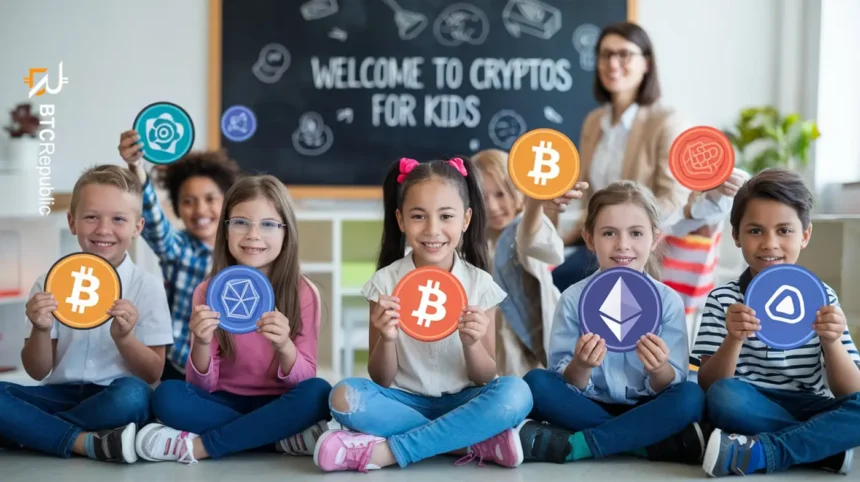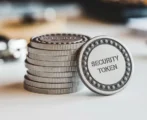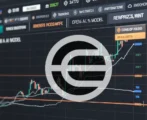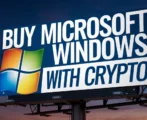With the cryptocurrency world rapidly expanding at a dynamic rate, more and more parents are looking into the possibility of investing in cryptos on their children’s behalf.
Apart from securing your child’s future with crypto investments, embracing crypto can help kids learn about finance, technology, and responsibility at a young age. But out of hundreds of cryptos, it’s hard to know which ones are best for younger investors like under-18s.
This article explores whether or not children can purchase crypto and, if so, which is the best crypto for kids based on investment potential, educational value, and more. It also outlines certain key considerations before opening and managing a crypto account for your child.
- Are Kids Legally Allowed To Buy Cryptos In 2024?
- 11 Best Crypto For Kids in 2024
- Bitcoin (BTC)
- Ethereum (ETH)
- Binance Coin (BNB)
- Cardano (ADA)
- Stellar (XLM)
- Dogecoin (DOGE)
- Tezos (XTZ)
- Litecoin (LTC)
- Ripple (XRP)
- Algorand (ALGO)
- FunFair (FUN)
- How To Buy Cryptocurrency For Kids
- Key Considerations In Opening And Managing A Crypto Account For Your Kids
- Decide On How To Overcome The Age Limitation
- Choose The Right Cryptos
- Exercise Parental Control
- Teach Your Kids
- Adopt Strict Security Measures
- Have A Long-Term Perspective
- Prioritize Regulatory Awareness And Compliance
- No-KYC Wallet Options For Kids Crypto Accounts
- Conclusion
- FAQs
Are Kids Legally Allowed To Buy Cryptos In 2024?
Most countries have an age limit on buying crypto. This age is usually 18 or more in most countries. This means that, largely due to KYC requirements, minors generally cannot open accounts on cryptocurrency exchanges or conduct trades without parental consent or involvement.
In the United States, many exchanges require users to be at least 18 years old. There are exchanges that have custodial accounts allowing parents to invest in crypto and hold it for their children.
Like in the US, most of the exchanges in the EU have an age limit of 18 as well. But regulations differ among member states, and some may let minors trade if under the watch of parents.
The scenario is similar in the UK, where its FCA (Financial Conduct Authority) in the UK bans selling some crypto products in retail, but in general, minors can’t hold accounts on their own.
So basically, all countries have different laws about minors using cryptocurrency. Where the laws are just developing, such laws may constantly be changing.
11 Best Crypto For Kids in 2024
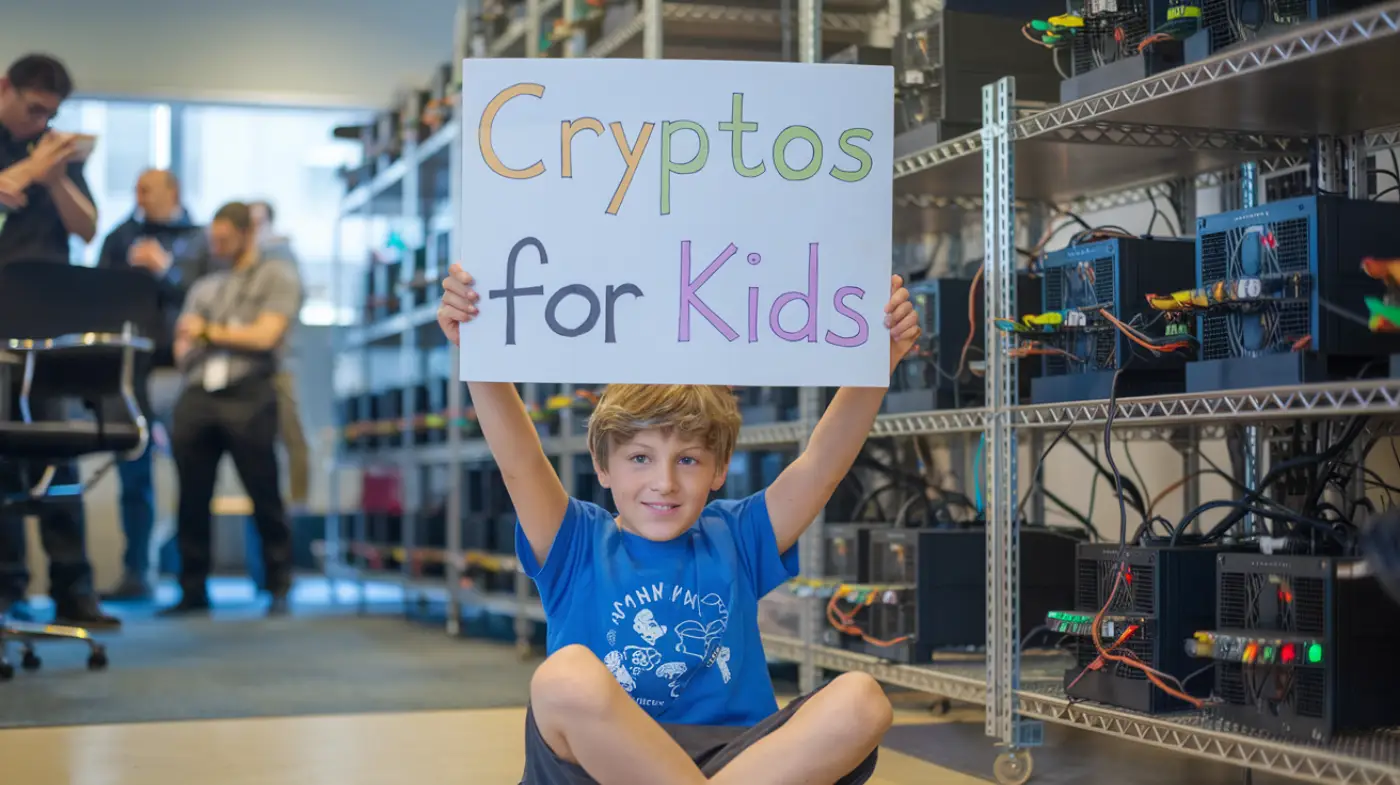
There are lots of cryptos available today. But which ones are most ideal for kids? The following are some of the best cryptocurrencies that kids can potentially engage with, along with reasons why they are most suitable:
Bitcoin (BTC)
The oldest, most valuable, and most well-known cryptocurrency. Learning about Bitcoin can teach kids the basics of digital currencies and how transactions work on blockchain technology.
Bitcoin will also introduce kids to the idea of scarcity (only 21 million Bitcoins will ever be produced) and crypto mining.
Ethereum (ETH)
A platform for the development of smart contracts and decentralized applications (dApps).
The Ethereum network is a great tool for children to learn about contract formalities, programmable money, and the possibilities of decentralized finance (DeFi).
Children can also use it to discover how apps are constructed on blockchain technology.
Binance Coin (BNB)
The original or native coin from the Binance exchange used for trades and network transaction fees. It provides practical applications within a major exchange, making it easier to understand how trading works.
The regulatory issues of Binance can serve as an example for the children about the necessity of compliance.
Cardano (ADA)
A blockchain platform focused on sustainability and scalability. Cardano takes a research-driven approach to blockchain technology.
It encourages discussions around technology’s impact on the environment and society while promoting the idea of building better systems.
Stellar (XLM)
A platform built around the purpose of easing cross-border transactions and financial inclusion.
It can educate children about the world of finance and how blockchain can provide financial services to those in third-world countries.
Dogecoin (DOGE)
Originally a meme-based cryptocurrency, Doge has gained popularity over time. It is community oriented and has a fun image so it is easy for a child to find interesting.
It can be a good asset for teaching kids about community-driven projects and the impact of social media on value perception.
Tezos (XTZ)
Tezos is a self-amending blockchain that enables smart contracts. It could serve as an entry for children to learn about governing structures in blockchain, how these structures can change, and how people make technological decisions.
Litecoin (LTC)
Created as a “lighter” version of Bitcoin (often referred to as the silver to Bitcoin’s gold), Litecoin is a peer-to-peer cryptocurrency designed to accomplish faster transaction times.
From it, children could learn about transaction speed, lower costs, the differences in networks, and how currencies may differ in functionality.
Ripple (XRP)
A blockchain-based digital payment network with XRP as its native crypto. It can help sensitize children to the idea of international payments and how cryptocurrencies can make transactions faster and less costly.
Algorand (ALGO)
Algorand is designed for speed and efficiency. It will make the kids realize how crucial transaction speed and scalability are in blockchain networks.
FunFair (FUN)
FunFair is designed for online gaming and casinos. It can be used as an educational tool for children to understand the crossover of gaming and blockchain, which is a field that is expanding at a very high rate.
How To Buy Cryptocurrency For Kids
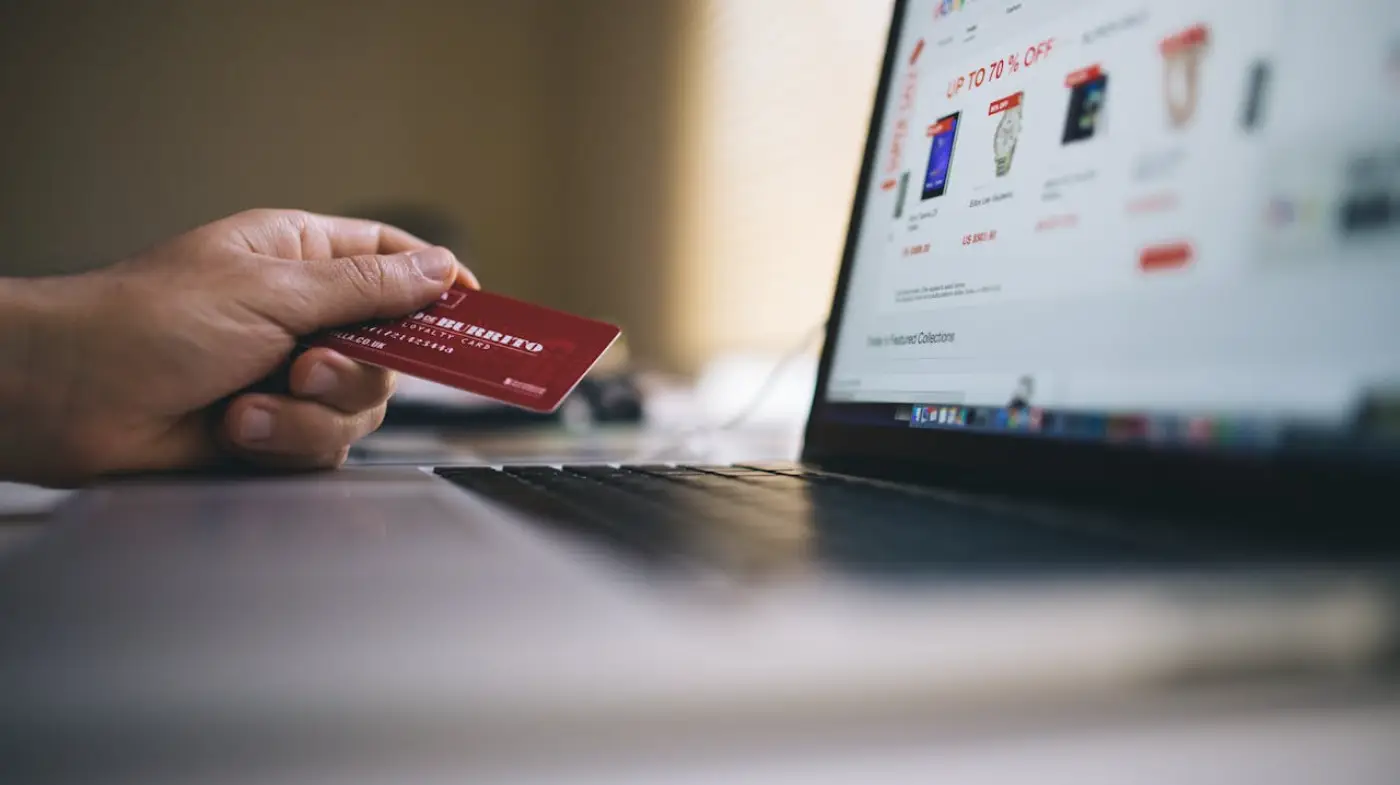
Buying cryptos is a simple process that usually involves the following steps:
- Choose a reputable exchange: Try to use something more secure like Coinbase, Binance, or Kraken.
- Create the account: Most exchanges need ID verification and other KYC stuff just to be legal. This step may not be necessary in a no-KYC exchange.
- Fund the account: Use a bank transfer, credit card, or other methods to deposit funds.
- Buy cryptocurrency: After you log in to the account, simply pick out which crypto you want to buy for your child and click yes.
- Store safely: Use a secure wallet (hardware or software) to store the cryptocurrency safely.
Key Considerations In Opening And Managing A Crypto Account For Your Kids
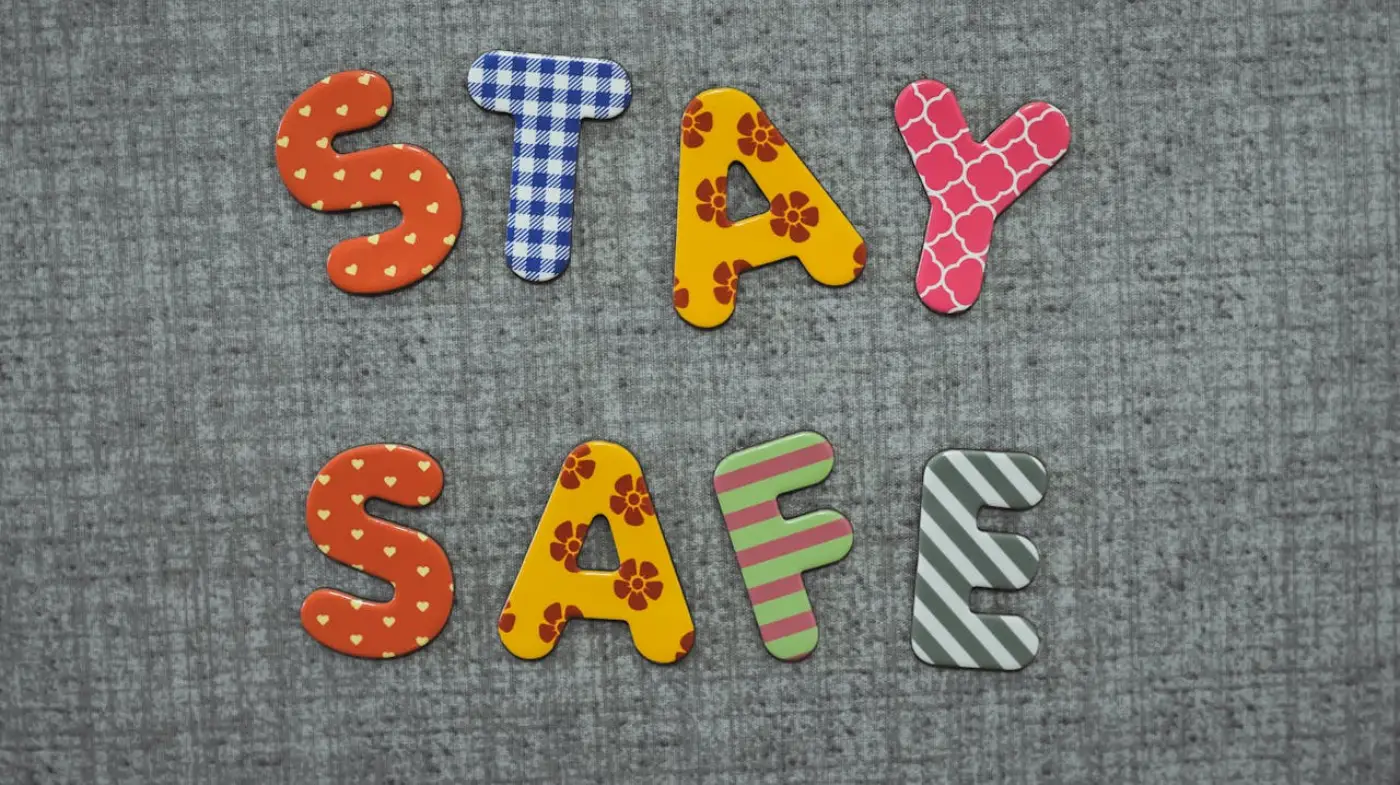
When considering buying cryptocurrencies for kids, several key factors should be taken into account to ensure a safe investment and a great educational experience. Here are some primary considerations:
Decide On How To Overcome The Age Limitation
Most exchanges require users to be at least 18. Determine how you will navigate this—often, parents can open accounts on behalf of minors.
No-KYC exchanges are also a great option because they help users circumvent the age limit requirement for the KYC verification process.
Choose The Right Cryptos
Stick to the more “reputable” cryptocurrencies (i.e., Bitcoin, Ethereum, etc) that have been around for a while since they tend to be more stable or less volatile.
Additionally, select coins that offer better educational value, such as insights into blockchain technology, financial principles, and sustainability.
Exercise Parental Control
Crypto investments are volatile, risky, and characterized by occasional scams. So, opening an account on your child’s behalf is not the end of the story.
You also need to be involved in the day-to-day running of the account. Your adult knowledge and experience will help ensure a smooth learning curve for the young kid while helping guard against any fraudulent activity on the account.
Teach Your Kids
As you exercise parental control, you also have to be a crypto professor if your idea is that, in the future, your kids will eventually take complete control of the account you opened on their behalf.
Teach them some principles of investing profitably and explain the volatile nature of cryptocurrencies and the potential for losses.
Also, inform them of the usual scams in crypto land and to be careful. Make them understand the environmental effects of crypto mining and the importance of independently researching to develop industry awareness and stay informed about market trends and developments in the crypto space, as well as any other relevant knowledge and skills.
Adopt Strict Security Measures
Choose reputable exchanges with strong security protocols to protect against hacking and other fraud. Consider using a secure wallet (hardware or software) to store cryptocurrencies safely, always use antivirus and antimalware programs, and ensure that your software apps are constantly up to date, among other security measures.
Have A Long-Term Perspective
Treat the investment more like an educational experience instead of a “get rich quick” thing. Though short-term gains can help, focus more on the long-term potential of cryptocurrencies.
Prioritize Regulatory Awareness And Compliance
Stay informed about local regulations regarding cryptocurrency investments, especially for minors. Understand any tax responsibilities that might arise from cryptocurrency transactions and investments.
No-KYC Wallet Options For Kids Crypto Accounts
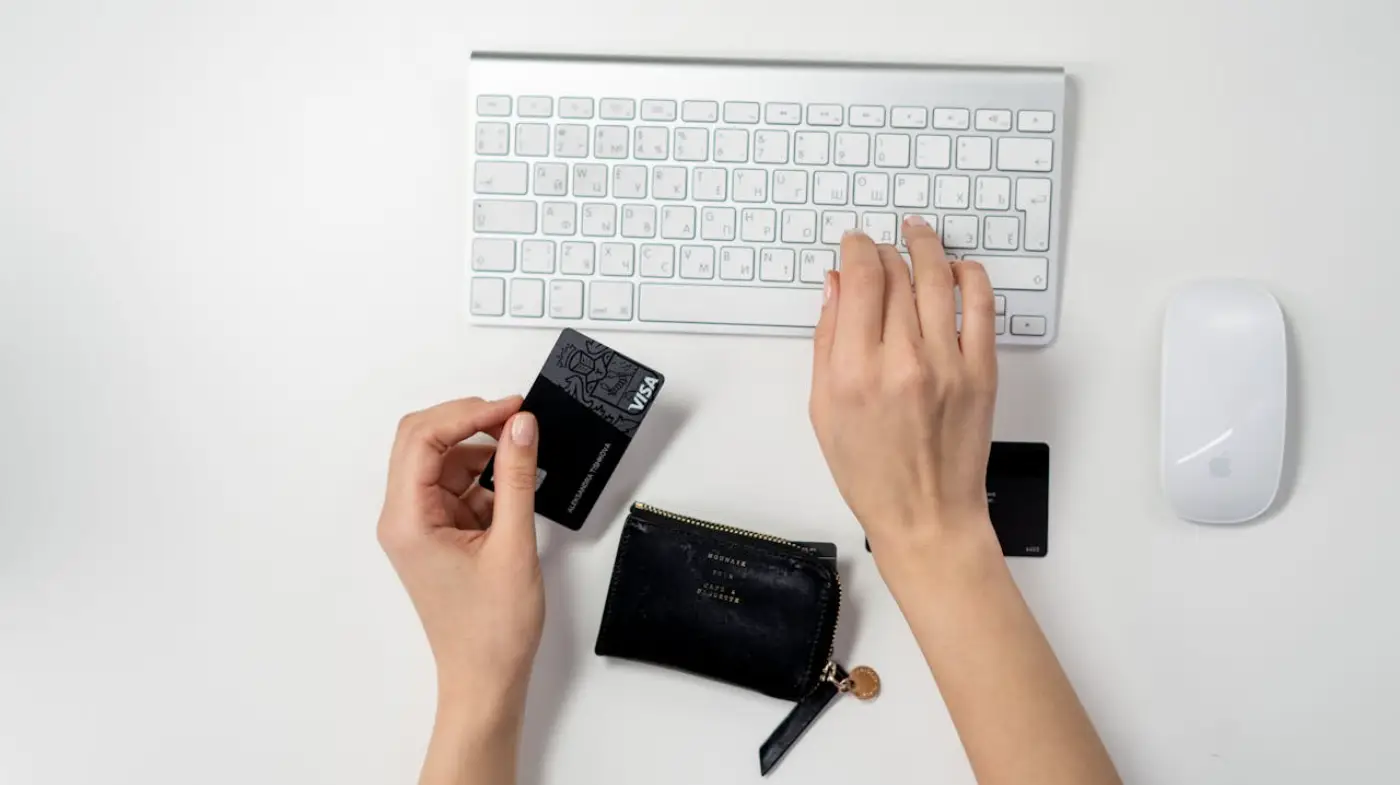
These days, most major and other crypto exchanges require a KYC process in order to abide by regulations that include those covering money laundering and terrorist financing.
But there are still a few exchanges that do not mandate you to pass through KYC verification. Here are some of them:
Margex

Margex was founded in 2019 as a decentralized peer-to-peer crypto exchange. Its highly intuitive and user-friendly interface is designed to work well with both beginners and experts. The company now has more than half a million users across 153 countries.
The Margex no-KYC account creation process takes less than one minute and requires just three things – your kid’s name, password, and confirming that the country you live in is supported by Margex.
Bisq
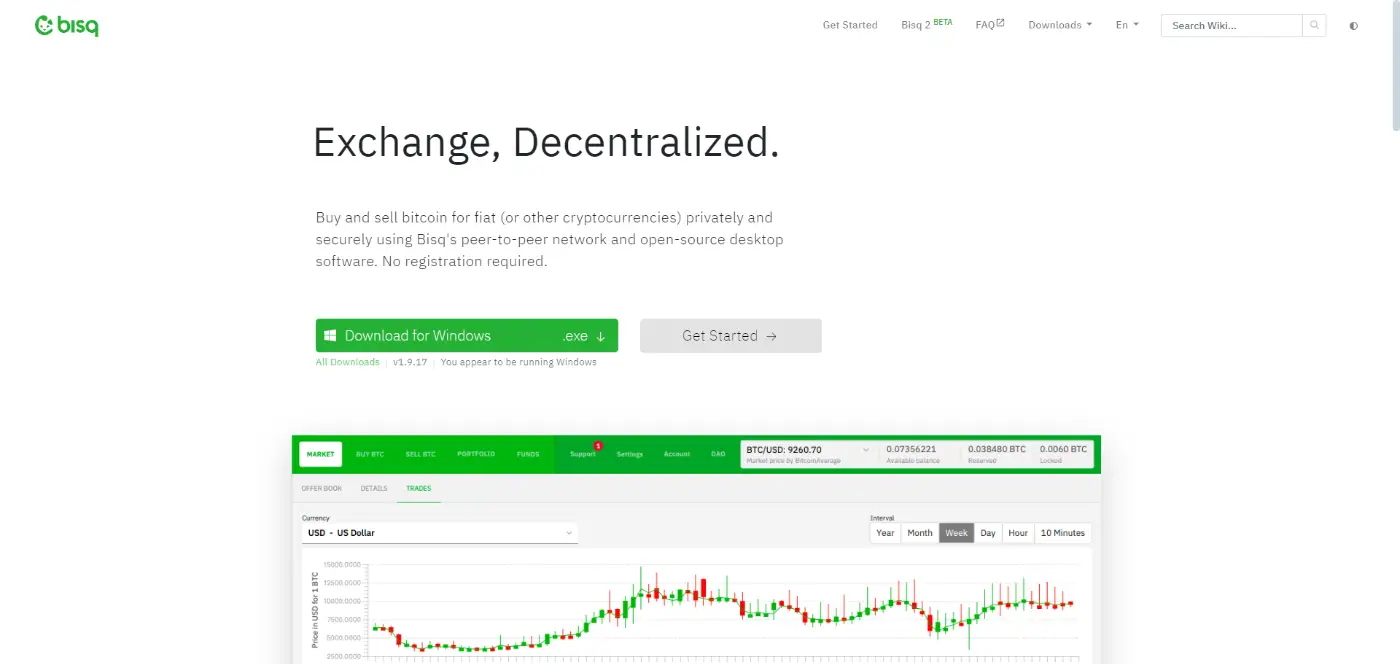
Bisq is a peer-to-peer network that works as a decentralized and open-source desktop. The software comes in two versions, namely Bisq 1 and Bisq 2. Both enable users to buy and sell crypto without privacy worries and KYC verification.
Unlike Bisq 1, which requires a security deposit, trade, and miner fees prior to trading Bitcoin, Bisq 2 users will initially trade without these expenses.
Bisq 2 is also integrated with the Lightning Network, which means faster transactions and lower transaction costs.
OpenPeer

Like Bisq, OpenPeer is also a peer-to-peer, decentralized, and open-source platform where users can trade cryptos directly without having to undergo a KYC process.
OpenPeer aims to be a secure and trusted trading environment that offers a peer-to-peer user experience that is better than that of centralized exchanges.
To achieve this, it leverages decentralized identity and proof of humanity solutions to ensure enhanced user privacy and user legitimacy.
Conclusion
In conclusion, introducing children to the world of cryptocurrencies can be a valuable investment and educational experience, provided it’s approached with care and responsibility.
When considering the best cryptocurrencies for kids, it’s essential to prioritize options that emphasize parental control, user-friendliness, and educational resources.
Ultimately, the goals should be investment profitability, fostering financial literacy and critical thinking, and ensuring that kids are well-prepared for the evolving financial landscape as they grow older.
As with any investment, guidance and oversight are vital in helping them navigate this exciting but volatile new world.
FAQs
-
Should kids dive into crypto waters?
Yes. It is okay for kids to understand cryptocurrencies at an early age, as long as it is under the supervision of parents or guardians.
-
Can I buy crypto for my child?
Yes. Parents can also purchase crypto for their kids. However, you need to either operate the account on your kid’s behalf or control and supervise how your kid operates the account.
-
Can I open a crypto wallet in my child’s name?
Because of KYC age limit requirements, it will not be possible to open a crypto account for a kid below 18. A good alternative is to try no-KYC wallets such as Mergex, Bisq and OpenPeer.
-
How do you explain blockchain to a 5-year-old?
You can explain Blockchain as basically a public online ledger that stakeholders can view and write in, but once something is written, it can never be erased. This helps everyone trust what’s in the notebook.
-
How would you explain Bitcoin to a 5-year-old?
Bitcoin is digital money that lives on the internet. Just like how you can trade toys or stickers with friends, people can trade Bitcoin online, and it’s not made of paper like regular money.


